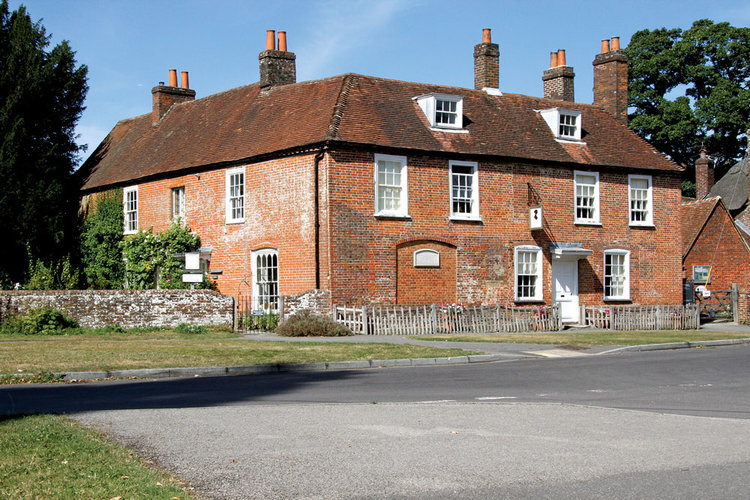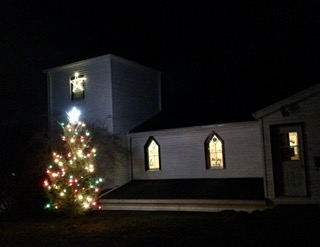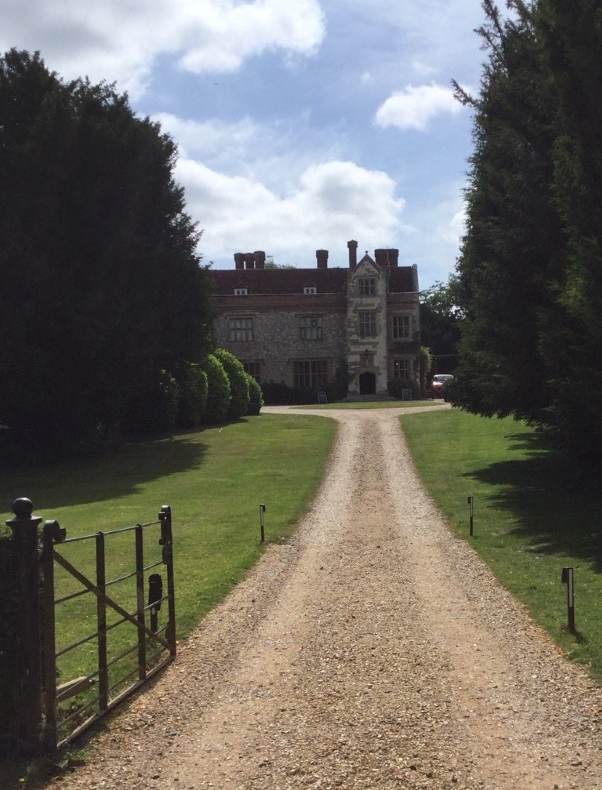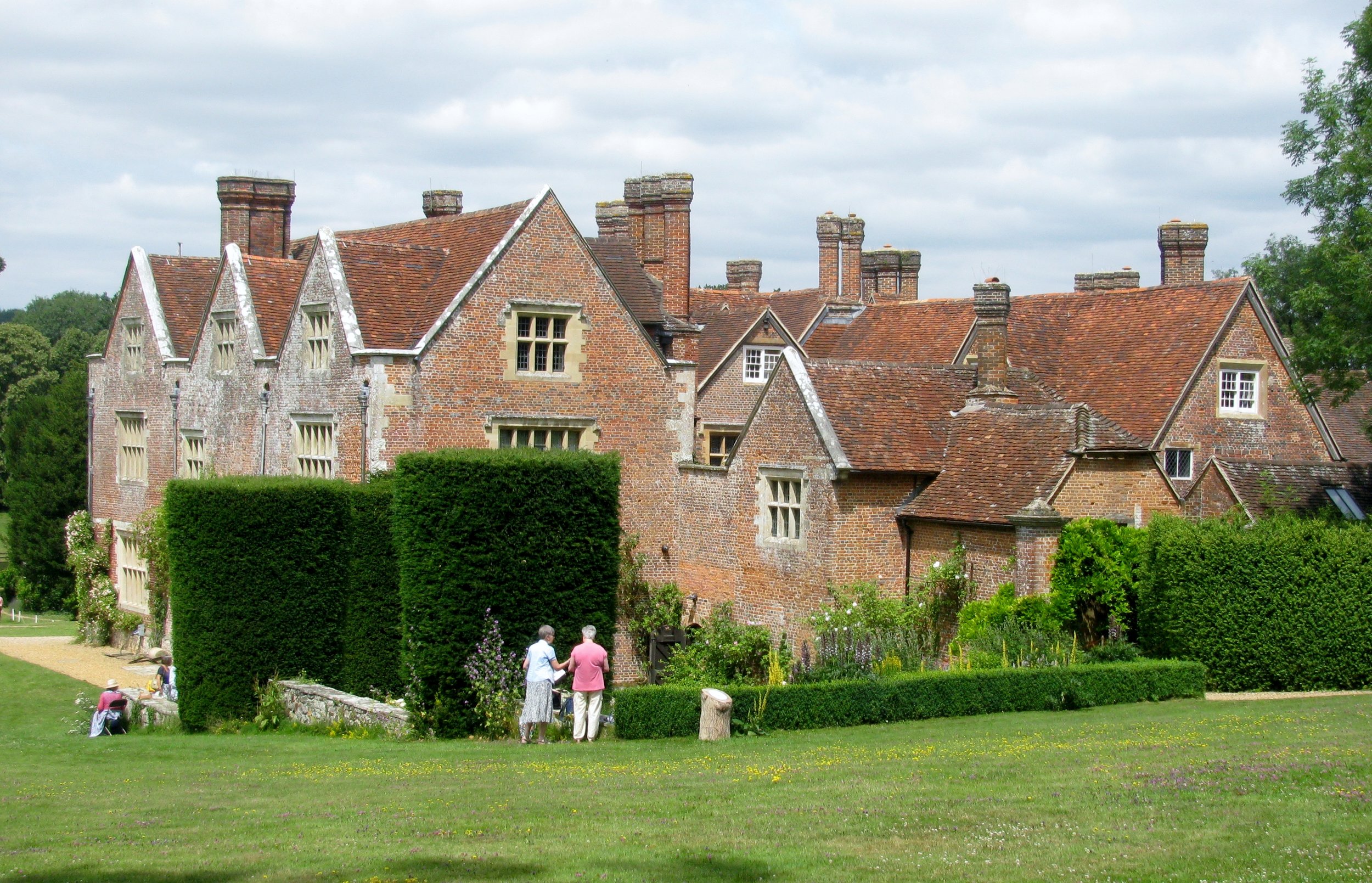I like to imagine how the Christmas season was celebrated at Chawton cottage in December 1809, the year which found Jane, Cassandra, their mother and their friend Martha Lloyd settled in their new Hampshire home. Jane’s letters give no hint of the scope of festivities.[1] However, we can be confident that certain activities were enjoyed and perhaps new forms of conviviality adopted.
Fig.1: Chawton Cottage[2]
The women had moved to Chawton during July, and although the timing was not ideal for planting and harvesting the range of fruits and vegetables they would cultivate in future years, they surely took the prospect of festive eating seriously and made sure to acquire the materials they needed. Consulting Julienne Gehrer’s books about Regency meals and their preparation reveals a range of tempting recipes. Their first festive season in Chawton may have included feasting on roast turkey,[3] and delicacies such as ragout of veal, fricassee of turnips, white soup and orange flavoured sponge cake.[4]
Fig. 2: Dining with Jane Austen by Julienne Gehrer
This was also the season for special hymns and carol singing. Jane, Cassandra and Martha had grown up as a rector’s daughters and Mrs Austen had supportively participated in her late husband’s parishes of Steventon and Deane. Now resident in Chawton all four women would have worshiped at the nearby church of St Nicholas. It is likely that traditional hymns, such as “While Shepherds Watched Their Flocks by Night,” “Joy to the World,” and “Hark the Herald Angels Sing” were incorporated into Advent and Christmas services and were well known to the Austens and Martha Lloyd.
Fig.3: Martha Lloyd’s Household Book, introduction by Julienne Gehrer
Continuing the singing of favourite hymns at home was another pleasure of the season. Jane was an accomplished pianist and a willing accompanist. Moreover, she had access to a variety of musical material. Her sister-in-law, Elizabeth, wife of her brother, Edward, had transcribed the music for “Adeste Fideles,” also including verses in the original Latin.[5] Such manuscripts were regularly shared amongst the family, so Jane may have had her own copy of Elizabeth’s work. Jane developed a large repertoire of piano pieces making it likely that she could play a variety of religious Christmas and Advent music. Presumably those in the Cottage also appreciated a spirited tune such as the one in Jane Austen’s music albums[6] titled “Nos Galan,” which is Welsh for New Year’s Eve.
In the years following 1809 other family members gathered at Chawton Cottage during the twelve days of Christmas. In a letter written 3 November 1813, Jane reports that they are “likely to have a peep of Charles and Fanny at Christmas.” This could mean even more voices united in song!
May your holiday be a musical one, if that is your wish. In 2022, as in many Decembers past, my family has joined neighbours and friends to sing carols together in the chill Nova Scotian air while gathered round an illuminated fir tree under the tower of our small village church. It is magical!
Fig.4: The Scene of Carol Singing
Season’s Greetings,
Sheila
[1] There is a gap in her correspondence extending from 26 July 1809 until 18 April 1811.
[2] In a letter from 29 November 1812, Jane refers to “eating Turkies” as a “very pleasant [Christmas Duty].”
[3] These foods are mentioned in either Martha Lloyd’s Household Book or the Knight Family Cookbook.
[4] “Adeste Fideles” translates into English as “ O Come All Ye Faithful.” See “Austen’s Festive Music” in Jane Austen’s Regency World, Nov/Dec 2019, Issue 102, 50.
[5] The Austen Family Music Books, including Jane’s seventeen music albums have been digitalized by the University of Southampton. The tune of Nos Galan is now used for the carol “Deck the Halls with Boughs of Holly.”













